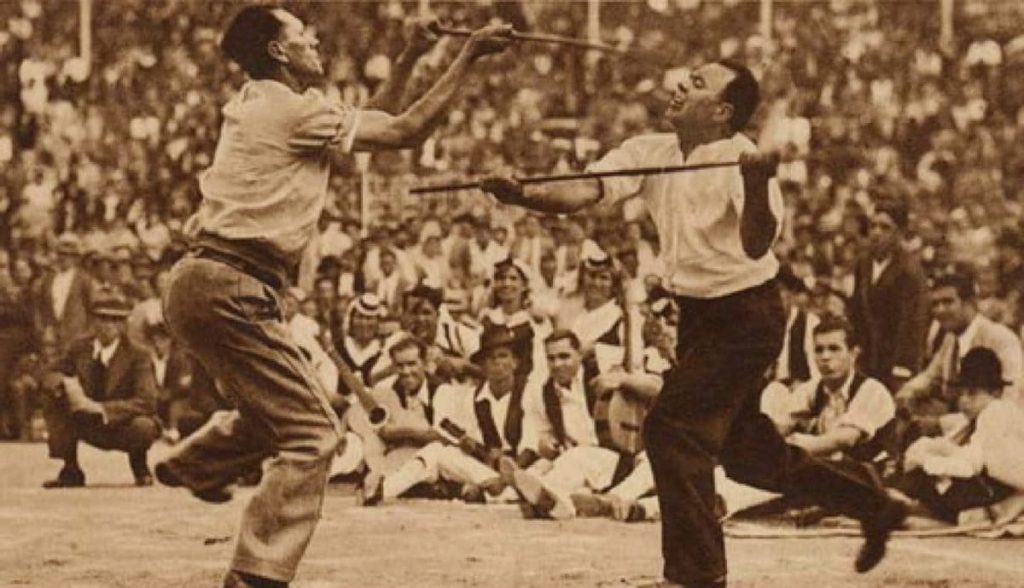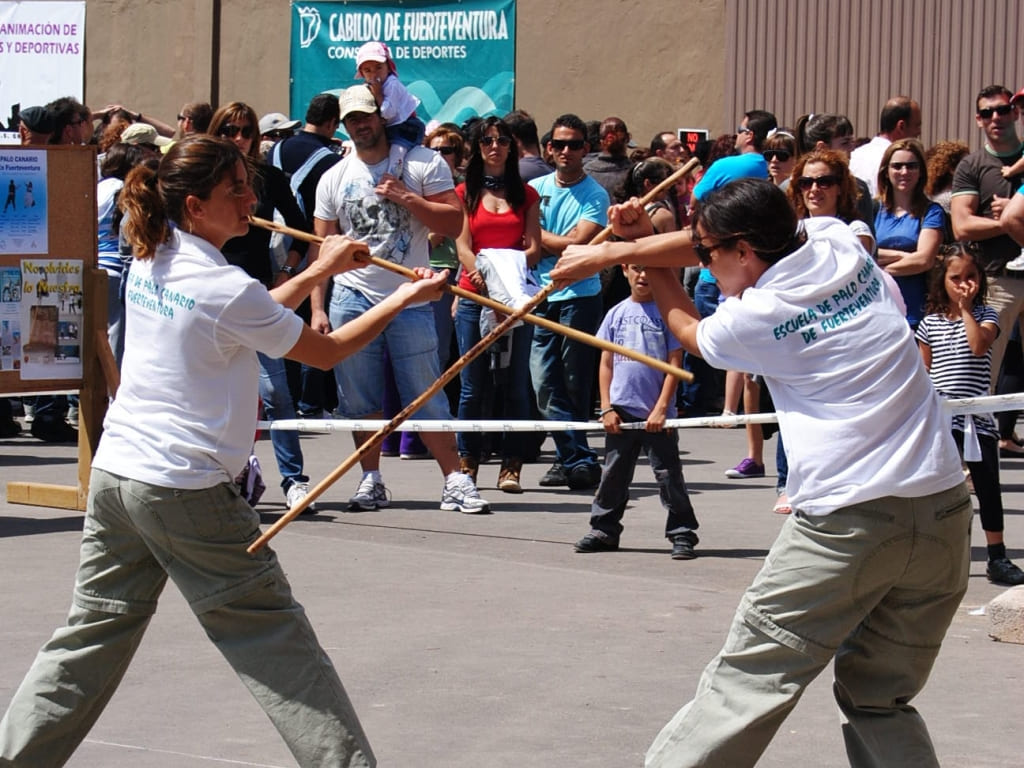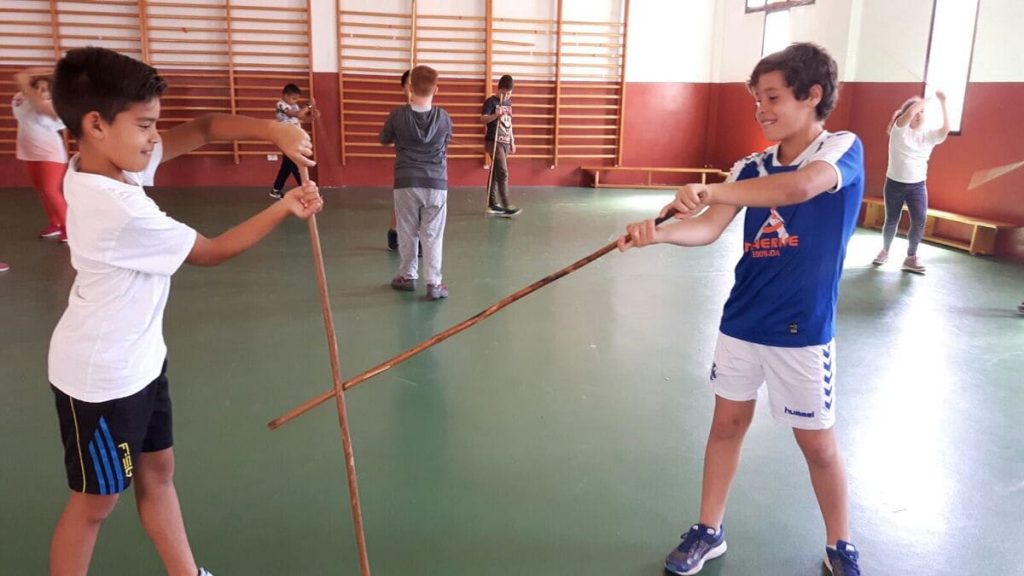Considered a vestige of the ancestral customs of the first inhabitants of the archipelago, as well as an evolution of warlike activities, the game of palo canario is a traditional sport of the Canary Islands.
Both technically and sportingly speaking, the game of palo canario consists of "stick fencing", similar to those that are preserved and practised in various parts of the world. The Canarian game is played between two people who, without making contact with the opponent's body, fight with sticks. The difference between the existing game modalities is determined by the size of the stick, distinguishing three modalities: small stick, medium stick and large stick.

Nowadays, the game of palo canario consists of a friendly confrontation with sticks between two people or players, who exchange controlled blows, thus avoiding full impact.
History of the canarian stick: from the fight to the sport
The first mention of the use of sticks by the aborigines dates back to 1402 by the Bimbaches, the name given to the first inhabitants of the island of El Hierro.

The second mention of this game comes from Leonardo Torriani, an Italian engineer and historian, who wrote Historia de las Islas in 1590. In this document, the Italian historian depicts a drawing of two canaries in a square performing a kind of ritual using medium-sized sticks.

Therefore, the origins of this game go back to the defensive-offensive and also playful practices carried out by the aboriginal Canary Islanders before the Castilian conquest. They used sticks called " magodos" or " amodeghes". At first, it consisted of a ritual through which to challenge an opponent and confront him. Later, it evolved into the game that is played today.
News and features
The game of palo is still played today as it was in the past, preserving the sporting sense, so that, although there is a natural competitive element in it, it is so little relevant that it is not regulated. The game of palo canario is based, in its essence, on respect for the opponent.
Three modalities have been maintained and passed down in the Canary Islands. Firstly, the game of "palo canario grande", so called because it is larger than the person carrying it, also known as "garrote" .

On the other hand, the medium-sized canary stick, whose size must not exceed the chin of the bearer, nor be less than the distance from his feet to his waist. Depending on the island, in this modality the stick may also be called "vara".
Finally, the small canary stick game, also called palo chico, whose size can even allow it to be hidden in the wearer's clothes.
As far as the technical development of the game of palo canario is concerned, it is the movements carried out jointly and in a coordinated way by the players that establish the positions and actions of defence and attack. Moreover, it is characterised by the fact that it does not have an established way of finishing, as does Canarian wrestling, another of the Archipelago's flagship sports, which we discuss in more detail in this article.o.
With the aim of preserving and promoting the game of Palo Canario, the Federation of the Game of Palo Canario (FEJUPAL) was founded in 1997. Based in Las Palmas de Gran Canaria, this association also supports the dissemination of this traditional practice both inside and outside the Canary Islands.
Paula Vera
Photos: Government of the Canary Islands, elrincondelaikido.blogspot.com, fuerteventuradigital.net, tenerifeconnect.be



